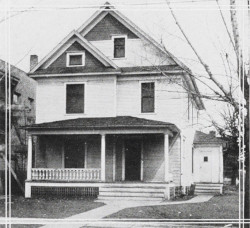Essays on the people, buildings, and events in the conjoined histories of East Lansing and Michigan State University, with a particular interest in the Michigan Agricultural College era (1855–1925), and a timeline of significant events.
Featured Post
The E. J. Rugg House (1904)
In a revised, expanded, and corrected article, we take a deeper look at the Rugg family, including their earlier rooming house business, their community involvement, and their move to this house, which once stood on Grand River Avenue. It also corrects the build date of the Rugg house, based on contemporary newspaper articles, and reveals an unexpected connection to the “White Elephant.” Read More.
